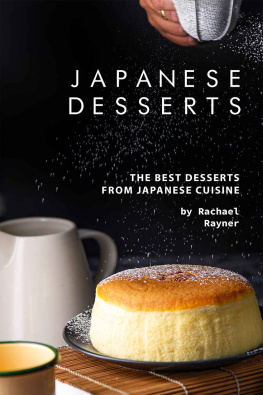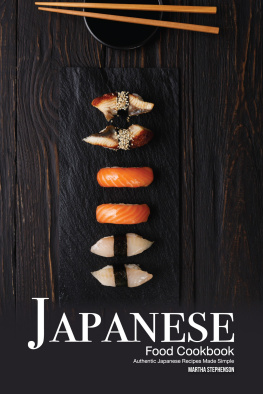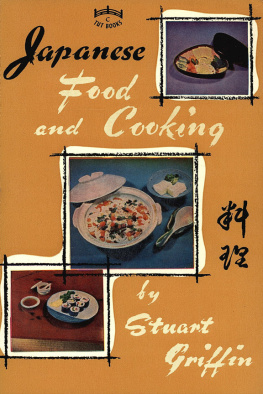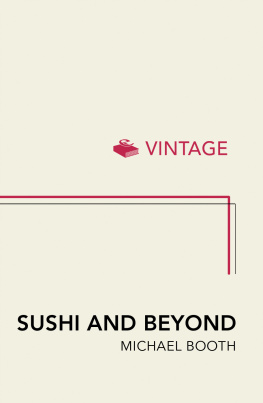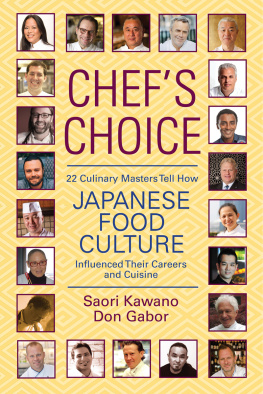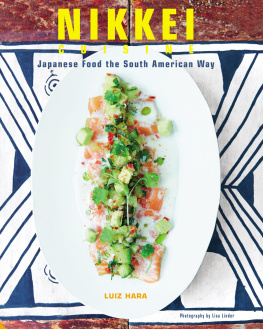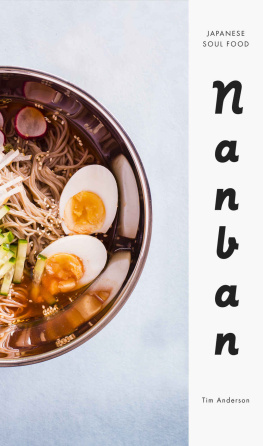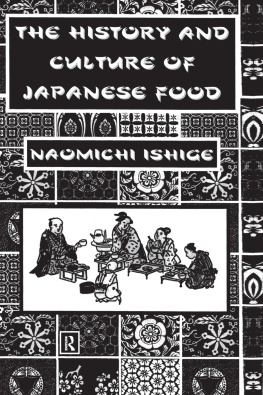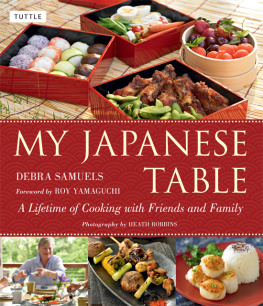The Essence of Japanese Cuisine
The Essence of Japanese Cuisine
AN ESSAY ON FOOD AND CULTURE
Michael Ashkenazi and Jeanne Jacob

First Published in 2000
by Curzon Press
Richmond, Surrey
http://www.curzonpress.co.uk
2000 Michael Ashkenazi and Jeanne Jacob
All rights reserved. No part of this book may be reprinted or reproduced or utilised in any form or by any electronic, mechanical, or other means, now known or hereafter invented, including photocopying and recording, or in any information storage or retrieval system, without permission in writing from the publishers.
British Library Cataloguing in Publication Data
A catalogue record of this book is available from the British Library
ISBN 070071085-X
Illustrations Copyright Michael Ashkenazi and Jeanne Jacob
Photographs by the authors
For Oren, Erez, and Maayan,
who participated vicariously in the making, and more importantly, the research for this book.
Contents
T O PROTECT THE privacy of some informants we have used pseudonyms and disguised identifying characteristics in the text. Nonetheless, we cite some who deserve special mention for their invaluable assistance while we researched and wrote this book.
Our thanks go first and foremost to the many interviewees and informants who gave of their time and substance. We also owe two institutions particular thanks: the Japan Foundation for funding research in Japan, most recently in 1996, and the staff of the Ajinomoto Shoku Bunka Sent (Ajinomoto Food Culture Centre) and particularly Mr. Kubota Yutaka, the Vice President of the Ajinomoto Foundation for Food Culture who gave us encouragement and a free run of one of the most exciting food libraries in the world.
In Yuzawa, Akita Prefecture, we are indebted to countless people. Foremost is Okuyama Shunzo, friend and counsellor of many years, who once again acted as informant, mentor, opener of many doors. He and wife Miyako hosted and fed us, and, more importantly, stimulated discussion and examination of many of the ideas expressed here in person as well as through correspondence over the years. Other members of the Okuyama clan Yukiko and Yoko - assisted us in Tokyo. Fujiwarasan of Fujiwara Miso is thanked for taking time off to explain in detail the process of manufacture, and for an informed tasting session of his product and others. The members of the Yuzawa Rotary Club, and of the Yuzawa South Rotary Club were as welcoming as always and opened many doors for us. Mr. Kurata of Kurata Confectioneries provided much valuable information as well as introductions.
In Hokkaido we owe thanks to Mr. Yoshida Shigeki for introducing us around Abashiri and spending long sessions exploring ideas of food and drink. We are also grateful to Mr. Tomura Makoto of Gyaran and Sakai-san of Sakai Trading for their time and attention. Many others in Hokkaido helped in gathering data and suggesting avenues of inquiry.
In Tokyo, Hiroko and Akiyo Nakatani and their children Sachiko, Nobuko and Yutaka, Jeannes family in Japan through the YWCA Mothers Scheme, introduced her to Japanese home cooking and living. They have continued in their role for many years, and helped in collecting material for this book, enlisting friends, colleagues, and relatives to provide us with information, all of which is useful and much of which was delicious.
Yano Tetsu and the members of the SF Translation Group have continued to open our eyes (and many doors) to the wealth of possibilities in Japanese cuisine since our student days. We thank them for their friendship and support which always make our stays in Japan not only culinarily interesting but intellectually stimulating. Without them, and particularly without the kindness and concern of Asakura-san, we would have been much more impoverished spiritually and culinarily.
Tanaka Tosui took precious time off her calligraphic work to introduce and guide us to the gastronomic treasures of her community in Toshima-ku. We are grateful for her hospitality and kindness throughout.
Mr. Yamamoto Toshio, chef and manager for his time and hospitality and sharing with us his breadth of knowledge regarding the food business in Japan.
Mr. Mabuchi Mutsuo, First Secretary of the Japanese Embassy in Israel, later seconded to the Tokyo Metropolitan Government, and his wife Haruko, who invited us to their home and helped ensure the success of our research in many ways.
Mr. Noda Koichiro, author, film-maker, gourmet, and great conversationalist deserves thanks for a memorable dinner and no less memorable exposition on Japanese food.
Ms. Mori Kazuyo who several times took time off from her busy schedule to discuss traditional Edo cooking and her own business enterprise.
Ms. Nakajima Miho of H2O provided many useful hints from her own experience as editor.
To Aracoeli Soriano, networker par excellence, a million thanks for taking care of us in many ways whenever were in Tokyo, and for introducing us to her favourite restaurants and to Morieda Takashi, who in turn must be thanked profusely for his many connections in the Japanese cooking world.
Outside Japan we owe thanks to the staff of the Japan Centre at the University of Birmingham where several drafts of this book were written and particularly to Dr. Chris Watson, the director. Michaels colleagues at Gyosei College are thanked for encouragement and for comments and hints that helped in the writing of this book. Adrian of Macintosh Support UK deserves thanks for his courtesy and help in restoring our confidence in Apple Co. which enabled us to complete this book. The members of the H-JAPAN, H-ASIA and the 1-food-japan mailing lists have freely offered advice and information on references and sources when requested.
We are grateful to Dr. Kazuko Okazaki-Luff, Mr. Gordon Brooks and Ms. Momoko Thompson for reading earlier drafts of this book. Their comments contributed greatly to the books style and substance.
From innumerable people we have received advice and commentary on the ideas behind this book and on its writing, as well as their hospitality, and we are grateful for their contribution to this book. We claim responsibility, however, for any errors of omission and commission, for which we apologise in advance. We can only restate what has been a truism in any cuisine: chacun son got, and we are, of course no exception: this book is unquestionably from our personal views (albeit, aided by original research and a great deal of reliance on others efforts and research) of Japanese food.
Between pages 112 and 113. |

A NYONE WITH AN appreciation of fine cooking can recount memorable meals. Most of ours had been set in Japan, and we started to wonder what it was that set apart these meals from others. What elements contribute to a diners enjoyable experience of Japanese food? Are these different for non-Japanese food, and why? Without a clear idea of what a Japanese fine dining experience is like, it is impossible to analyse it. Here is a recreation of one of those meals.
We met Yukiko at the entrance to Shinjuku station, from which it was a short walk to the restaurant she had chosen. Yukiko was an interior coordinator for a major home construction company and her excellent taste naturally extended to food. Several years before she had introduced Jeanne to an innovative restaurant, and the fusion of Mediterranean techniques with Japanese ingredients and condiments served on handcrafted stoneware plates was impressive. Prepared as we were, our expectations fell short of reality.
Next page


